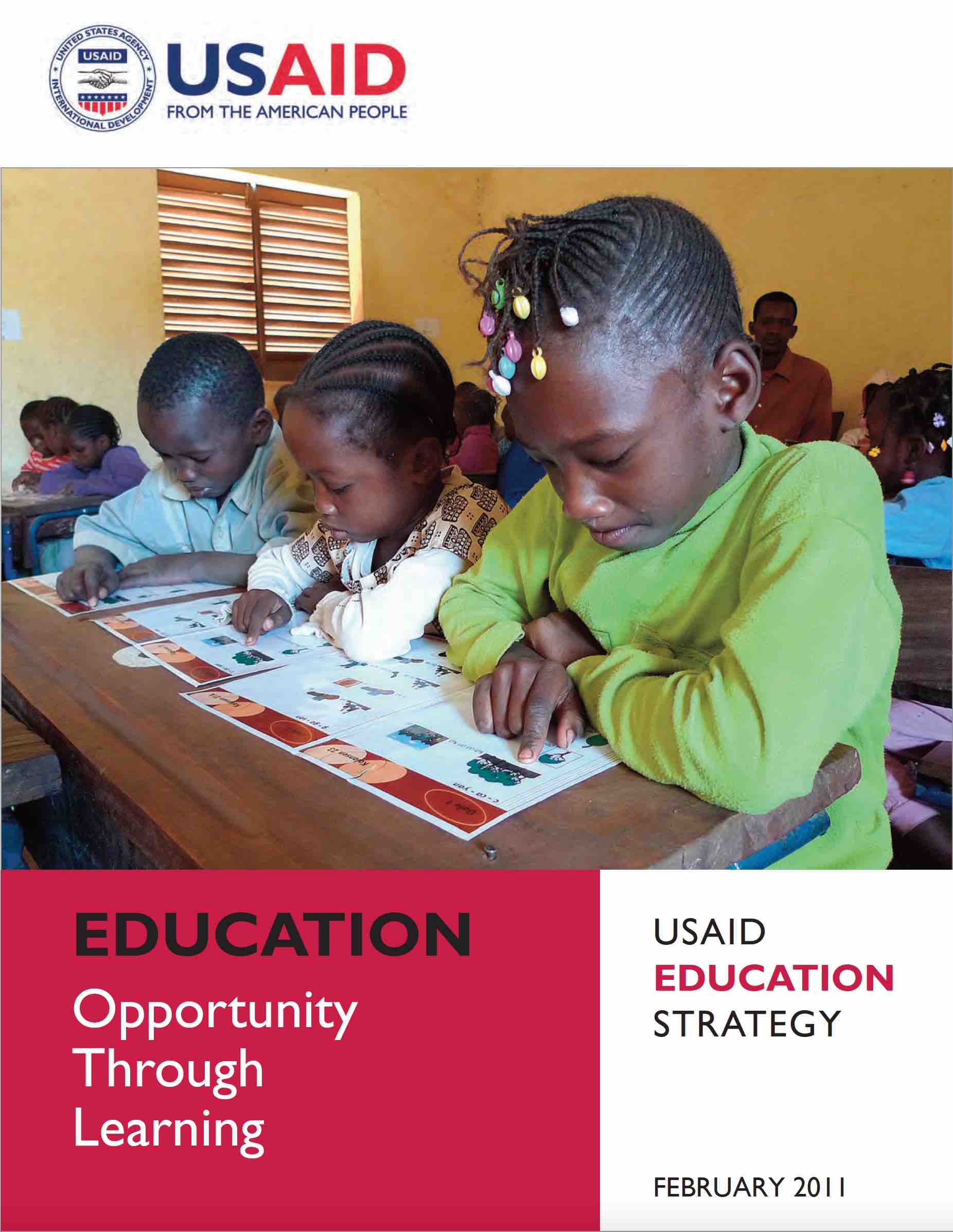![]() (612k) Education Strategy
(612k) Education Strategy
In late 2010, USAID Administrator Rajiv Shah commissioned a new Agency-wide Education Strategy to ensure that USAID’s global education investments would be informed by recent Presidential policy guidance; grounded in the most current evidence-based analysis of educational effectiveness; and aimed at maximizing the impact and sustainability of development results. This 2011-2015 Education Strategy was created to reflect these core principles.
This Education Strategy is premised on the development hypothesis that education is both foundational to human development and critically linked to broad-based economic growth and democratic governance. Research has demonstrated that education raises individual incomes and, in an enabling environment, can contribute significantly to economic growth. Education helps ensure that growth is broad-based and reaches the poorest. Through its impact on economic growth, education helps catalyze transitions to democracy and helps preserve robust democratic governance. Education also helps improve health outcomes. Access to education is a crucial precondition to educational impact, but what matters most thereafter is the quality of education. Because of these important links to other powerful drivers of development, educational investments should be understood as dynamic and transformational levers of change.
Embracing the President’s 2010 U.S.Global Development Policy principles,USAID will invest education resources strategically to achieve measurable and sustainable educational outcomes through enhanced selectivity, focus, countryled programming, division of labor and innovation. Additionally, critical priorities such as improved evaluation practices, gender integration and sustainability will undergird all of our investments. We will look for opportunities to achieve greater impact and scale, based on a country’s commitment to reform, potential to achieve rapid results, and relative educational need. We will also encourage phasing out of programs that are very small or nonstrategic, unless they can demonstrate a very high marginal impact on policy reform, system strengthening, program integration or innovation piloting. As a result, USAID’s future global education footprint is expected to evolve in shape and size, and to be more closely coordinated with partner governments,civil society, other donors and the private sector.
Based on projected resource availability, and on the policy principles above,USAID will pursue three global education goals:
- Goal One: Improved reading skills for 100 million children in primary grades by 2015;
- Goal Two: Improved ability of tertiary and workforce development programs to generate workforce skills relevant to a country’s development goals; and
- Goal Three: Increased equitable access to education in crisis and conflict environments for 15 million learners by 2015.
This Education Strategy explains the rationale for selecting these goals; provides illustrative results, activities and measures of success; and links all of these in an illustrative results framework. Important crosscutting issues of concern are discussed, including youth programming, gender equality,marginalized populations and disabled learners, and integrating education with other development priorities. Finally, the strategy promises a “roadmap for implementation” that will provide more detailed guidance to field missions on how USAID will institutionalize its new policies, build a 21st century research agenda, explicitly seek more robust partnerships,and establish new norms and incentives for educational strategic planning and knowledge sharing.








Comment
Make a general inquiry or suggest an improvement.